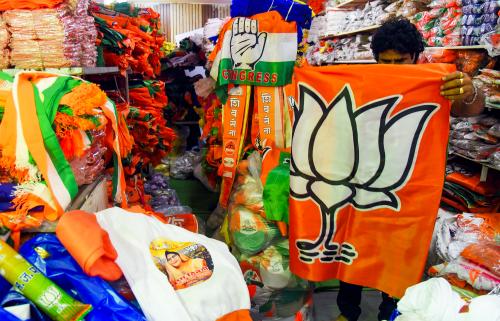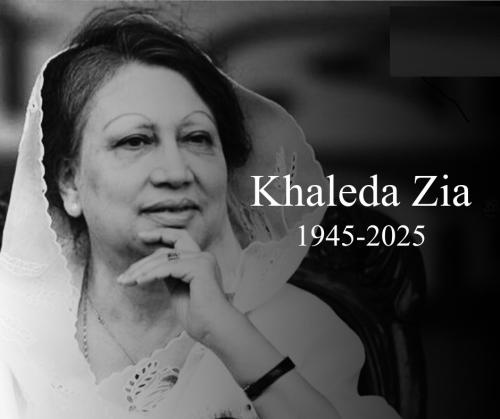BY VINOD MIRANI Mythology and history are staging a comeback on the big screen! After all, that is what we started our filmmaking with. The landmark films being Raja Harishchandra and Alam Ara. One thought the genres were lost to television forever. In fact, a couple of genres, like family soap operas aka family socials as well as mythological themes, which had their own captive audiences, were picked up by the television serial makers. With these themes, a serial maker could stretch the stories, highlight all the characters and continue a serial for as long as it held the interest of the viewer making them into mega serials. Both catered to the families, especially the female lot. And, that translated to TRP. If other genres like action, romance and horror were spared, that was because they were no good for the prime time television family viewers. As for comedy, no serial maker would ever think of venturing there because we hardly have competent comedy writers for a two-hour film, making an episodic serial is asking for too much. If one observes, even on OTT platforms, the comedies are rare. If the mythologies are staging a comeback on the big screen, it is a great surprise. As for historicals, as defined by the filmmaker and not necessarily based on the history taking, what is called, creative liberty, like Mughal-e-Azam, Anarkali, Taj Mahal, Razia Sultan, Noorjehan, Jhansi Ki Rani, Prithvi Vallabh, Sikander-e-Azam, besides films on Chandragupta, Ashok, Shahjehan, Rana Pratap -- many of these had romance at the centre. Recently, we had Bajirao Mastani, Padmavat, Manikarnika, Tanhaji: The Unsung Warrior, Jodha Akbar, Mohenjo Daro, and such. All with box office formula blended in. On television, the early mythologies, Ramanand Sagar's Ramayana and B.R. Chopra's Mahabharata, caught more eyeballs than any other serial and set the tone for more such programmes. Since then, we have had a line-up of mythologies. These serials found ready viewership. There was a generation which had read both the tomes, Ramayana as well as Mahabharata, while those who had not read them had, at least, cursory knowledge of the stories and it was great to watch them enacted on the screen. As if that was not enough, believers took to watching these serials with religious fervor. So much so that a bath and removing footwear became mandatory before the serials started playing. Mythological tales abound in India and to add children to the viewer list, versions of childhood stories of deities followed the major epics, Bal Hanuman, Bal Ganesh, Bal Krishna and Luv Kush aimed at appealing kids. In fact, even while one serial on Radha Krishna is on air on Disney+Star, another serial on Krishna's childhood exploits, Jai Kanhaiya Lal Ki, has just taken off on the same channel! As for other serials, the one that has been the makers' favourite is on Saint Saibaba. Many serials on his life have been made over the years, while at least two more are currently on air on two different channels! There was no way film producers could compete with television serials when it came to mythology. A normal film was 150 minutes-long at best in those days while, on television, a serial could go on and on going into details and expanding on. The special effects were easy and done on the table while, in films, it was done on the sets and needed experts to create sets as well as in the cinematography departments. The filmmakers made faith-oriented films for special occasions and festivals. Shiv Mahapuran, Vishnu Puran, Jai Bajrangbali, Tulsi Vivah, Jai Santoshi Maa, Hari Darshan, Dhruv, Bhakta Prahlad, Subhadra Haran, Raja Harishchandra, Bhimsen, Danveer Karna and so many others, some of them planned especially for the pious month of Shravan. Similarly, Muslim socials like Alam Ara, Dayare Madina, Aulea E Islam, Mere Gharib Nawaz, Nek Parveen and more such movies were made to draw the Muslim audience, especially, for the month Ramzan and the Eid festival. So, what has caused the filmmakers to comeback to these two genres, especially knowing that they involve huge costs besides the fact that the generation now may not find familiarity with them! Also, most of the films so far in the offing are based on either pre Mughal history or mythological heroes and may not hold appeal for a section of the audience which boasts of a better movie going tradition. One attraction for the maker opting for myth or history as a theme is that it tests the maker's vision and imagination. It would need opulence and vastness that make the film a visual delight. It has to have grandeur. After all, that was the norm around the 1960s when a maker thought in 70mm! It would be relevant to take a look into some of the new announcements made recently. A film on the greatest Indian thinker and strategist, whose wisdom is shared and followed even today, Chanakya, will be made with Ajay Devgn playing the lead. Ram Setu, a film with Akshay Kumar, in the lead, dwells into the mythical bridge built by Lord Ram's monkey brigade between Rameshwaram in South India and Mannar Island in Sri Lanka. The bridge and its existence were in the news recently as the international media found its existence to be real. The film will blend the myth with the contemporary as Akshay Kumar plays a modern day archaeologist. Prithviraj, the legendary warrior, will be portrayed by Akshay Kumar. A lot of things work for this project. The first being that Prithviraj Chauhan was the complete hero in the sense that his story is about defeating an Afghan invader and marauder, Mohammed Ghori, his romance with princess Sanyukta, make it a perfect film formula. To add to the value, the film is directed by Dr Chandra Prakash Dwivedi and backed by Yash Raj Films. Then, there is soon to be launched, The Immortal Aswathama, a modern day action hero film with its main character, Aswathama, inspired from Mahabharata. There are other announcements that may be made in Hindi language or as bilingual. What has kicked off this sudden urge among producers to get into such larger than life production ventures which may eventually prove to be tough to execute and make the stories look plausible to an audience who has no clue of the subjects? Ramayana and Mahabharata are fine but how many can identify with such films as Suheldev? What seems to have aroused the urge for mammoth films on historical or mythological characters is the unprecedented success of Baahubali, it was not made in Hindi but a dubbed version captured the box office all over India and also the imagination of filmmakers, Hindi as well as in the southern Indian languages. Once upon a time, every maker wanted a Sholay of his own, now it is Baahubali, that the makers aspire to match! (Vinod Mirani is a veteran film writer and box office analyst. The views expressed are personal)
Myth and history: Back to where we started
- by Rinku
- October 28, 2021 2 minutes

Myth and history: Back to where we started (Column: B-Town).(photo:Instagram)
Glasgow Climate Change Summit
October 28, 2021









